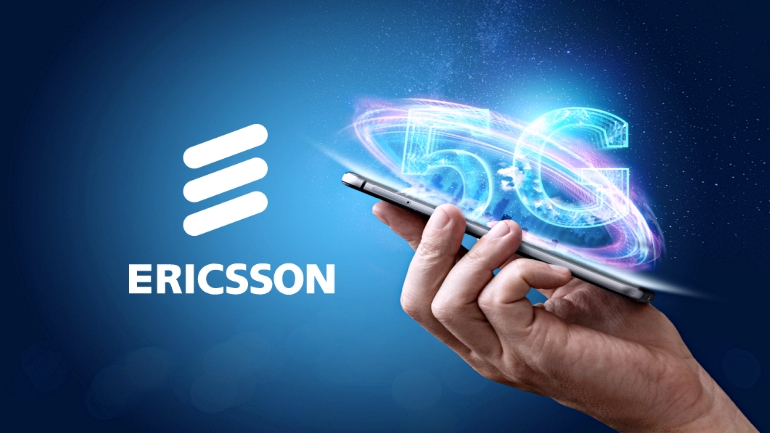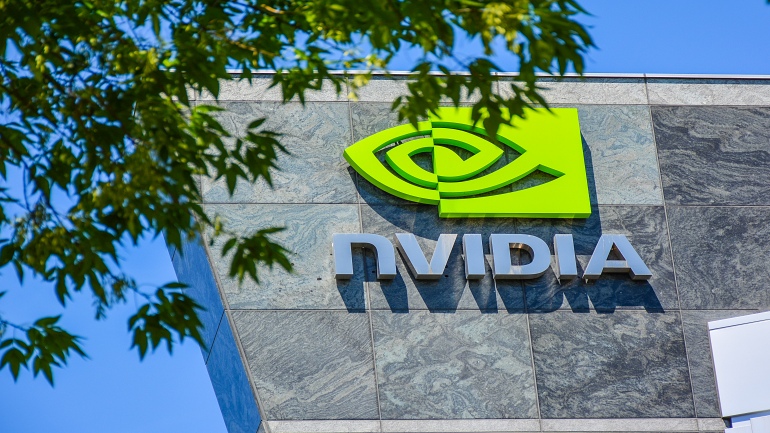A towering success: Cellnex revenue tops €1bn Cellnex Telecom’s revenue for 2019 exceeded EUR 1 billion with 67.5 percent of total income coming from infrastructure services it provides to operators. The Spanish wireless infrastructure operator currently owns 36,471 operative sites in eight European countries and plans to add 28,000 more as a result of ongoing acquisition deals pending completion. Cellnex has also announced a partnership with Bouygues Telecom to help them deploy their 5G network. The two companies have agreed to create a joint venture (51 percent Cellnex and 49 percent Bouygues Telecom) that will deploy and operate a fiber network connecting infrastructure equipment across France. Read more at https://tinyurl.com/s6fmz4h Google plans to invest $10 billion in US offices and data centers in 2020 Google has unveiled its plans to invest more than USD 10 billion in offices and data centers across the United States in 2020. Google and Alphabet…
EU’s new digital strategy targets data-hoarding tech firms The European Commission has proposed its new European digital strategy “Europe Fit for the Digital Age” that puts a target on all the biggest US tech players. It states that a large part of the world’s data is currently owned by a small number of Big Tech firms, which “could reduce the incentives for data-driven businesses to emerge, grow and innovate in the EU today, but numerous opportunities lie ahead.” The new proposals indicate the need to provide “an attractive policy environment”, which means that data can flow throughout the EU while applying data protection values established under the General Data Protection Regulation (GDPR). Read more at https://tinyurl.com/wdb9hee Dell targets telco edge deployments with new server, micro data centre Dell Technologies has introduced new products for telecom operators that are building out edge network deployments. A compact high-performance server, a modular micro…
British officials recommend role for China’s Huawei in 5G network UK officials have proposed allowing Chinese tech giant Huawei to play a limited role in the UK’s future 5G network, resisting calls from the US for a complete ban over fears of Chinese spying. Huawei will be kept out of the sensitive, data-heavy “core” parts of 5G infrastructure, but will be allowed to deploy its equipment in other parts of the network, according to sources speaking to Reuters. This recommendation comes ahead of a meeting of Britain’s National Security Council next week to decide how to deploy Huawei equipment. In addition, this proposal would satisfy Britain’s two largest telecoms operators, BT and Vodafone, which already use Huawei equipment and are against a total ban. Read more at: https://tinyurl.com/szmovzy CityFibre buys FibreNation from debt-laden TalkTalk for £200 million Britain’s TalkTalk Telecom Group has agreed to sell its FibreNation full-fibre network business…
Telefonica piloting blockchain across 8,000 companies Telecoms multinational Telefonica has teamed up with the Association of Science and Technology Parks (APTE) to provide approximately 8,000 companies in Spain with access to a secure, decentralised blockchain network. Telefonica plans to launch a three-month pilot project that will encourage companies to develop their own decentralised applications on the blockchain at no extra cost, and will also allow them to experiment with their own digital tokens. Blockchain is being widely adopted in a variety of industries, especially in the field of IoT, where 75 percent of IoT technology users in the US already use blockchain or plan to do so by the end of 2020. Read more at: https://tinyurl.com/t8z8p9d Samsung Galaxy Fold sales figures revealed, and they’re worse than earlier reports Samsung Electronics sold close to half a million of its Galaxy Fold smartphones last year. Speaking to the Yonhap News Agency at CES 2020,…
Google Cloud partners with Fortinet, McAfee, Palo Alto and other vendors to bolster its security Google has announced new strategic partnerships with security vendors Fortinet, McAfee and Palo Alto Networks. Together with Fortinet, Google Cloud will provide a new reference architecture to connect facilities to Google Cloud with secure SD-WAN solutions, which makes Fortinet’s FortiWeb Cloud WAF available as-a-service on the platform. MacAfee will integrate its MVISION container security software on Google Cloud. The jointly developed Palo Alto Networks and Google solutions will help secure customers’ multi-cloud environments and will enhance threat detection capabilities. Read more at: https://tinyurl.com/rx68bt5 UK plans to ban sales of locked mobile phones Ofcom, the UK’s telecoms regulator, has announced plans to ban the sale of locked mobile handsets to make it easier for consumers to switch networks. Virgin Mobile, O2, Sky, Three and some smaller carriers already offer unlocked phones, but the regulator wants other companies, including…
Apple now owns Intel’s mobile modem business Intel, a leader in the semiconductor industry, has completed the sale of the majority of its smartphone modem business to Apple. The company said this transaction enables it to focus on developing 5G network technology while maintaining the ability to create modems for non-smartphone applications, such as PCs, Internet of Things (IoT) devices and autonomous vehicles. Apple now uses Qualcomm for 4G LTE and 5G modems for iPhones. With this acquisition, Apple is planning to develop its own modems for smartphones in 2021. Read more at: https://tinyurl.com/rqmu724 Orange unveils new five-year grand plan Orange, a French multinational telecommunications corporation, has introduced “Engage 2025”, its new strategy that follows on from the Essentials 2020 plan launched in 2015. The corporation has revealed its goals for the coming years, emphasizing that its business model will be guided by social and environmental responsibility. Considering the operator’s business…
Ericsson, one of the world’s leading providers of technology and services to telecom operators, has completed the first transglobal 5G data call over live commercial 5G networks, showcasing its Spectrum Sharing technology. Through their collaboration with 5G ecosystem industry leaders Qualcomm Technologies, Swisscom and Telstra, and using a 5G smartphone from Chinese manufacturer OPPO, Ericsson continues to demonstrate its drive towards commercial dynamic spectrum sharing. The Swedish tech giant said that the November 29 data call connected Bern, Switzerland and the Gold Coast, Australia using Ericsson Spectrum Sharing deployed on Swisscom’s and Telstra’s commercial 5G networks at the respective sites. The call was achieved using spectrum sharing on a 3GPP Frequency Division Duplex (FDD) band and pre-commercial OPPO 5G handsets employing the Qualcomm Snapdragon X55 5G Modem-RF System. Moreover, OPPO is the first 5G device manufacturer to implement Ericsson Spectrum Sharing in its smartphones. As part of the…
Samsung’s next flagship phone chip, the Exynos 990, is 20% faster Samsung has released its new Exynos 990 flagship chipset together with the 5G-capable Exynos Modem 5123 that are expected to help the next generation of mobile devices make intensive use of video and artificial intelligence (AI) applications as well as 5G communications. The Korean electronics giant said that the Exynos 990 is 20 percent faster at executing ordinary processing tasks, 20 percent faster in graphics processing and twice as fast in software tuned for the chip’s AI acceleration scheme. Read more at: https://tinyurl.com/y2qmemq5 Nvidia and Ericsson announce the first GPU-powered 5G mobile network At this year’s Mobile World Congress in Los Angeles, California, Nvidia announced the partnership with Ericsson and Red Hat to help mobile network operators accelerate 5G deployment. The company has compared the power of its GPU-accelerated EGX hardware to traditional CPU-based servers and claims that a…
Apple iOS 13 Launch Confirmed: 5 iPhone Security Features Coming This Month As the tech company that really cares about its user’s privacy, Apple attempts to differentiate itself from Facebook, Google and Amazon, and is bringing a number of massive improvements to the company’s iOS operating system this month. One of the biggest improvements is that the security enhanced Apple iOS 13 will not let Facebook and WhatsApp apps run VoIP in the background when the programs aren’t actively in use. Also, the system will send alerts about any apps that track user’s location and let an app access the location only once. Read more at: https://tinyurl.com/y4w8rj92 Samsung’s Exynos 980 chip is a processor and 5G modem in one The Korean tech giant has introduced its first 5G-integrated mobile chipset Exynos 980. This AI mobile processor combines a 5G modem and mobile application processor in a single chip, thus allowing…
The American chipset manufacturer Nvidia is rolling out its EGX platform to bring real-time artificial intelligence (AI) to the edge of the network. Nvidia EGX is an accelerated computing platform, which boasts low-latency AI that enables companies to perceive, understand and act in real time on continuous streaming data between 5G base stations, warehouses, retail stores, factories and beyond. AI computing will occur at the edge of the network, where sensors collect data before it is sent to cloud-connected data centers. This platform is expected to satisfy the increasing demand for AI applications to assist numerous devices streaming continuous raw sensor data and is designed for high-throughput AI at the edge where data is primarily sourced to achieve instantaneous and guaranteed response times while reducing bandwidth to the cloud. According to the company, by 2025, there could be up to 150 billion machine sensors and the Internet of Things (IoT) devices streaming…













